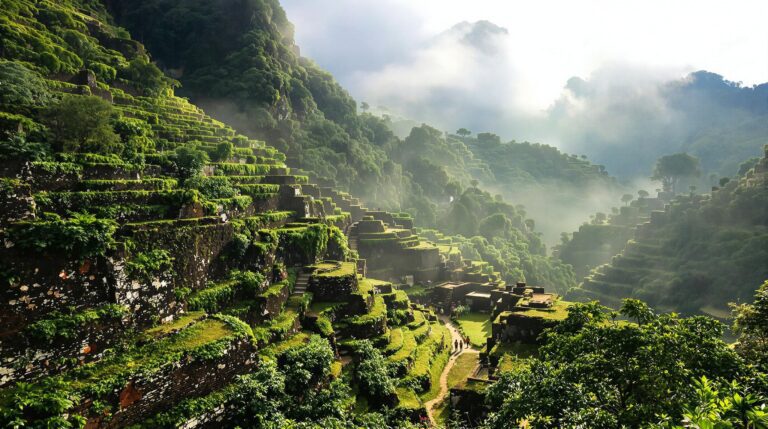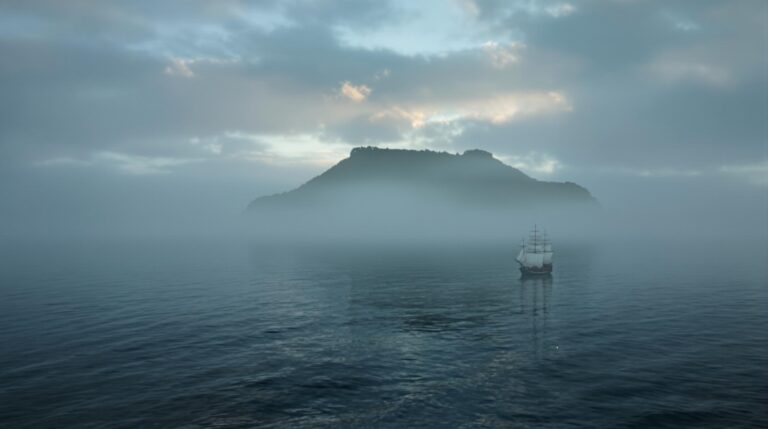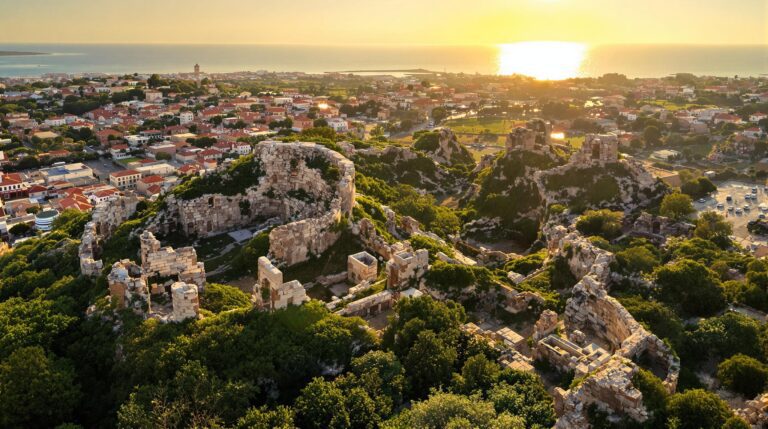Pavlopetri: Oldest Underwater City
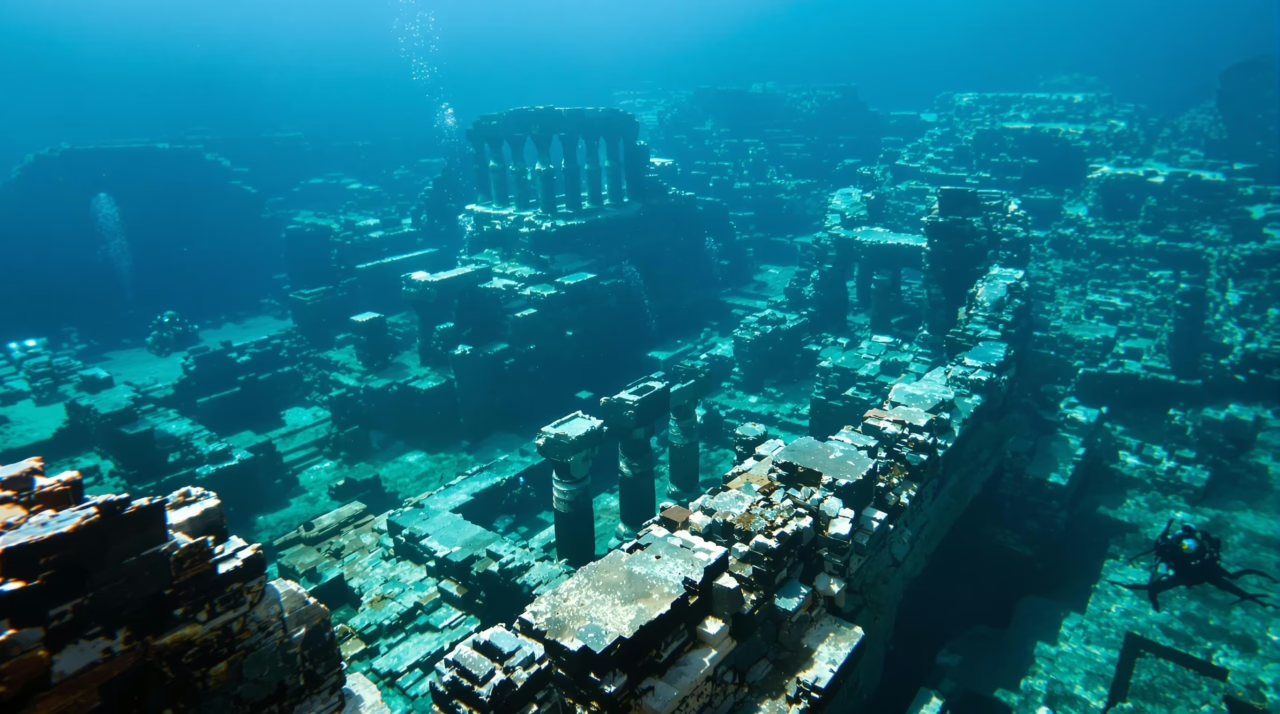
Pavlopetri, the oldest known underwater city, raises intriguing questions about ancient urban development.
Its sunken streets and structures lie beneath the waves, whispering stories of a civilization shaped by both ambition and nature’s relentless forces.
What can the meticulous layout reveal about the social fabric of its inhabitants?
As researchers sift through its submerged remnants, the potential for newfound understanding beckons, hinting at deeper mysteries waiting to be uncovered.
TL;DR
Hide- Pavlopetri, discovered in 1967, is the oldest known underwater city, revealing a well-planned urban landscape submerged for millennia.
- The site features organized street grids, housing structures, and communal spaces, showcasing ancient urban planning and social dynamics.
- Geological shifts, including rising sea levels, contributed to the submergence of Pavlopetri, reflecting environmental adaptations of its ancient inhabitants.
- Modern research utilizes underwater tools and mapping techniques to uncover and document the intricate layout of Pavlopetri.
- Preservation efforts face challenges from erosion and human activity, emphasizing the need for sustainable management of this cultural heritage site.
The Discovery and Significance of Pavlopetri
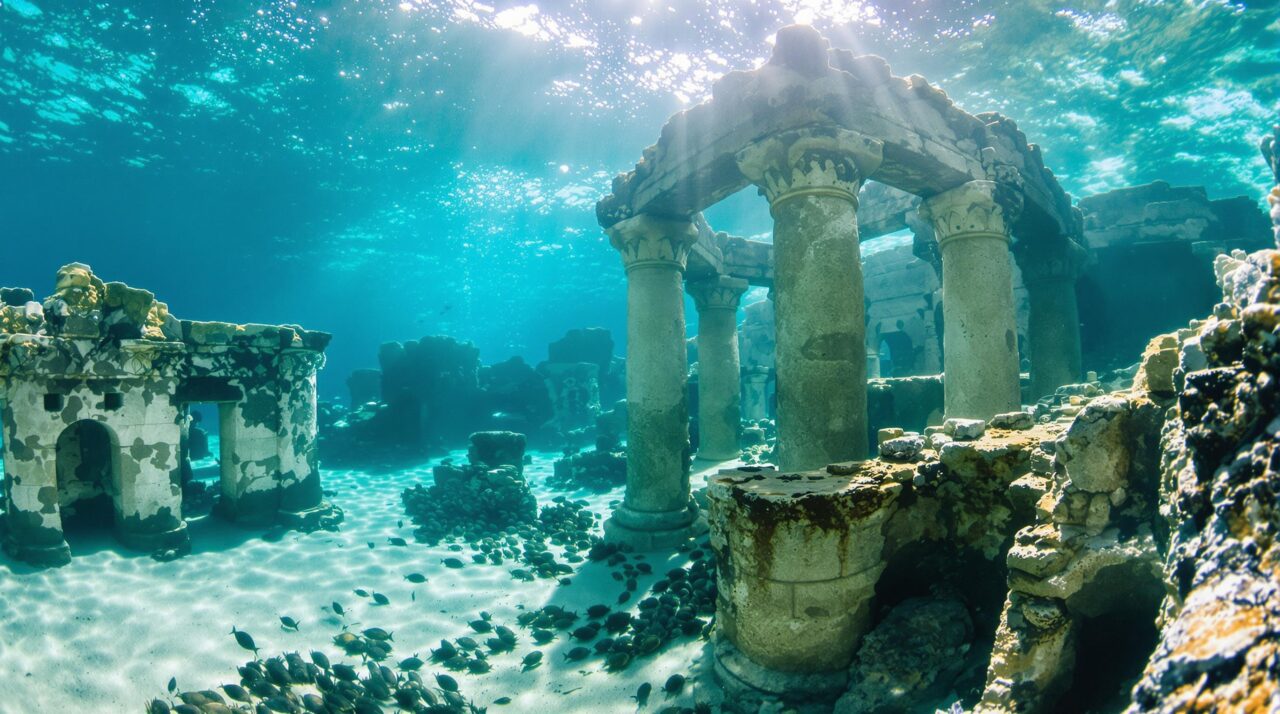
In 1967, the ruins of Pavlopetri emerged from the depths, revealing a lost city that had lain submerged for millennia.
This ancient site, with its intricately laid streets and structures, poses profound questions about early civilization and maritime culture.
As archaeologists piece together its story, the significance of Pavlopetri grows, illuminating not only the past but also the enduring relationship between humanity and the sea.
When and How It Was First Identified
The underwater city of Pavlopetri first emerged from the depths of obscurity through the keen observations of nautical explorers, who marveled at the sunken remnants of a once-thriving civilization.
Subsequent systematic research illuminated its intricate layout and historical significance, revealing a tapestry of ancient life woven into the fabric of the sea.
How did these early sightings transform into a profound understanding of Pavlopetri’s rich heritage and its role in the annals of human history?
Early Observations by Nautical Explorers
While many ancient ruins lie submerged beneath the waves, few capture the imagination quite like Pavlopetri, which beckons explorers with its submerged streets and timeworn structures.
Early nautical explorers, drawn by tales of lost civilizations, marveled at the intricate layout of this underwater city. Their observations ignited curiosity, leading to questions about its origins and the secrets held within its sunken embrace.
Confirmation Through Systematic Research
Amidst the whispers of lost civilizations and the echoes of ancient mariners, the systematic research that led to the discovery of Pavlopetri unfolded like a carefully unraveled scroll of history.
Key findings emerged through:
- Advanced underwater mapping techniques
- Archaeological excavations revealing structures
- Radiocarbon dating confirming its age
Each element painted a vivid portrait of a once-thriving city, beckoning explorers to explore deeper into its submerged past.
Why Pavlopetri Matters to Archaeology
Pavlopetri, with its sunken streets and submerged structures, offers a window into the complexities of prehistoric urban planning, challenging conventional narratives of ancient city development.
What secrets do these remnants reveal about the social and economic dynamics of coastal societies that once flourished?
The site stands as a poignant reminder of humanity’s relationship with the sea, inviting deeper exploration into the factors that led to its eventual submergence.
Insights into Prehistoric Urban Planning
As the depths of the Mediterranean cradle the remnants of an ancient civilization, the discovery of Pavlopetri offers a remarkable glimpse into prehistoric urban planning.
This submerged city reveals:
- Grid-like street layouts, suggesting organized communities.
- Advanced drainage systems, indicating foresight in sanitation.
- Residential zones, showcasing a blend of commerce and domestic life.
Such insights illuminate the sophistication and adaptability of early urban environments, sparking curiosity about their societal structures.
Clues About Ancient Coastal Societies
While exploring the depths of the Mediterranean, researchers unearth the whispers of ancient coastal societies through the remarkable site of Pavlopetri.
This submerged city reveals intricate streets and structures, hinting at sophisticated trade networks and cultural exchanges.
As artifacts emerge, they invite questions about daily life, social organization, and the environmental challenges these societies faced, illuminating humanity’s enduring connection to the sea.
Layout and Urban Features Below the Sea
Beneath the gentle waves of Pavlopetri lies a meticulously planned urban landscape, where ancient streets wind through remnants of buildings and open courtyards, whispering secrets of a once-thriving society.
The arrangement of structures suggests a sophisticated understanding of community design, perhaps indicating the presence of public spaces that facilitated social interaction.
What stories do these submerged thoroughfares and architectural fragments tell about the lives of those who called this city home?
Streets, Buildings, and Courtyards
Beneath the shimmering waves, the remnants of Pavlopetri reveal a meticulously organized urban landscape, with well-defined grids that speak to a sophisticated understanding of city planning.
Streets, lined with the outlines of buildings, hint at a lively community where housing, storage areas, and communal spaces coexisted harmoniously.
This underwater cityscape invites contemplation of the daily lives and social interactions that once flourished in this ancient maritime settlement.
Well-Defined Grids Indicating Organized Construction
Amidst the tranquil depths of the Aegean Sea lies Pavlopetri, an ancient marvel where well-defined grids reveal a sophisticated urban layout.
What secrets do these organized patterns hold?
- Intricate street systems suggest planned movement
- Courtyards indicate communal interaction
- Structured buildings reflect advanced architectural thought
Each element invites questions about the civilization that flourished in harmony with its environment, yearning for freedom and expression.
Housing, Storage Areas, and Communal Spaces
As the remnants of ancient structures emerge from the sandy seabed, the layout of Pavlopetri reveals a fascinating interplay between housing, storage areas, and communal spaces.
Intricate pathways connect modest abodes to expansive storage facilities, hinting at a lively community life.
Sunlight filters through the water, illuminating courtyards that once thrived with social gatherings, inviting contemplation of a civilization deeply intertwined with its environment.
Possible Public Structures
Beneath the shimmering surface of Pavlopetri lies a tantalizing tapestry of potential public structures, where the whispers of ancient temples, bustling workshops, and lively marketplaces beckon for exploration.
Modern technology offers a lens through which to interpret the enigmatic remnants, revealing the intricacies of urban life that once thrived in this submerged city.
What stories might the stones and foundations tell about the social and economic dynamics of a civilization long lost to the waves?
Evidence of Temples, Workshops, or Marketplaces
The submerged ruins of Pavlopetri awaken curiosity about the urban life of a civilization long past, hinting at the presence of temples, workshops, and marketplaces.
- Distinct stone foundations suggest communal spaces.
- Remnants of pottery indicate artisan workshops.
- Layout patterns evoke bustling marketplaces.
These features invite exploration, beckoning the imagination to reconstruct the lively daily life that once thrived beneath the waves.
Interpreting Remnants Through Modern Technology
Exploring the submerged remnants of Pavlopetri reveals potential public structures that offer insights into the city’s social organization.
Advanced sonar technology and 3D modeling disclose organized layouts, hinting at communal gathering spaces, expansive marketplaces, and ceremonial sites.
These remnants, encrusted with marine life, evoke a lively past, inviting curiosity about the interactions and daily lives of its ancient inhabitants beneath the waves.
Causes of Submersion and Environmental Factors
The submersion of Pavlopetri invites questions about the geological and climatic shifts that altered its landscape and ultimately sealed its fate beneath the waves.
How did these ancient inhabitants adapt to the relentless forces of nature that reshaped their world?
The interplay of rising sea levels and tectonic activity paints a vivid picture of a civilization grappling with an ever-changing environment.
Geological and Climatic Shifts
The gradual rise of sea levels, a relentless force sculpting coastlines, raises questions about the fate of ancient civilizations like Pavlopetri.
As tectonic movements shift the earth’s crust, the once-thriving city now lies beneath waves, a silent witness to the dynamic interplay of nature’s power.
What environmental factors conspired to transform this lively settlement into a submerged relic of history?
Rising Sea Levels Over Time
As rising sea levels gradually reshaped coastlines, the submerged city of Pavlopetri emerged as a haunting monument to the dynamic interplay between geological and climatic forces.
Factors contributing to this submersion include:
- Melting polar ice caps, releasing water into oceans
- Thermal expansion of seawater, increasing volume
- Shifts in precipitation patterns, altering land-water balance
These elements intertwine, revealing profound implications for coastal civilizations.
Tectonic Movements Affecting Coastal Zones
Rising sea levels, driven by climatic changes, are only part of the story behind Pavlopetri’s submersion.
Tectonic movements, hidden beneath the waves, reshape coastal landscapes, often leading to unexpected consequences. Earth’s restless plates shift and collide, causing land to sink or rise.
These geological forces intertwine with climatic shifts, crafting a complex narrative of submersion that challenges humanity’s perception of permanence along the coast.
How the Ancient Inhabitants Adapted
As the relentless tides reshaped their environment, how did the inhabitants of Pavlopetri respond to the encroaching waters that threatened their existence?
Perhaps they engineered structural modifications, crafting resilient adaptations that echoed their cultural legacy amidst shifting coastlines.
Was there a migration, or did they cling tenaciously to their heritage, weaving continuity into the very fabric of their submerged city?
Potential Migration or Structural Modifications
While the reasons behind Pavlopetri’s submersion remain a topic of intrigue, potential migration patterns and structural modifications offer valuable insights into how its ancient inhabitants adapted to their changing environment.
Considerations include:
- Shifting Tides: The inhabitants may have relocated to higher ground as sea levels rose.
- Architectural Innovations: Modifications to structures could reflect resilience against flooding.
- Resource Management: Sustainable practices might have emerged in response to environmental pressures.
Continuity of Culture Despite Shifting Shorelines
Despite the relentless encroachment of the sea, the ancient inhabitants of Pavlopetri demonstrated remarkable resilience, adapting their cultural practices to maintain continuity in the face of environmental upheaval.
As coastlines shifted, they innovated in fishing and trade, forging bonds with neighboring communities. This adaptability not only preserved their identity but also wove a vibrant fabric of shared heritage, defying the ocean’s grasp.
Modern Research and Preservation Efforts
Modern research into Pavlopetri employs cutting-edge underwater tools that reveal the intricate layout of this submerged city, exposing its ancient streets and structures to the light of contemporary understanding.
However, the challenges of protecting such a fragile site from environmental degradation and human interference loom large, raising questions about the balance between exploration and preservation.
How can researchers safeguard this historical treasure while continuing to reveal its secrets from beneath the waves?
Use of Cutting-Edge Underwater Tools
In the quest to unearth the secrets of Pavlopetri, modern researchers harness sophisticated sonar mapping and 3D reconstructions, revealing the city’s intricate layout with remarkable clarity.
These cutting-edge tools illuminate submerged structures, allowing for a detailed examination of ancient streets and buildings that have long been shrouded in mystery.
As diving expeditions meticulously explore these depths, they uncover fine details that breathe life into this submerged world, fostering a deeper understanding of its historical significance.
SONAR Mapping and 3D Reconstructions
As researchers explore the mysteries of Pavlopetri, the oldest underwater city, the application of sonar mapping and 3D reconstructions reveals not only the city’s layout but also its historical significance.
This advanced technology discloses:
- Intricate street patterns and building foundations
- Evidence of ancient maritime activities
- Insights into daily life of its inhabitants
Such findings ignite curiosity about this submerged world, beckoning further exploration.
Diving Expeditions Uncovering Fine Details
Building upon the discoveries made through sonar mapping and 3D reconstructions, recent diving expeditions at Pavlopetri have opened a window into the finer details of this ancient underwater city.
Divers, equipped with state-of-the-art tools, meticulously document intricate pottery fragments and submerged structures, revealing a vibrant mosaic of life long past.
Each find ignites curiosity about the civilization that once thrived in these now tranquil waters.
Challenges of Protecting an Underwater Site
The preservation of Pavlopetri, the world’s oldest underwater city, presents a complex interplay between the allure of scientific exploration and the increasing influx of tourism.
As waves gently lap against its ancient stones, the site faces relentless threats from erosion and human activity, each tide seemingly whispering the urgency of its protection.
How can the guardians of this submerged treasure balance the need for research with the imperative to shield it from further degradation?
Balancing Scientific Study and Tourism
How can the delicate balance between scientific inquiry and tourism be achieved at Pavlopetri, one of the world’s most significant underwater archaeological sites?
This complex dynamic raises important considerations, including:
- Ensuring sustainable visitor access without damaging fragile structures
- Promoting educational programs that foster respect for heritage
- Implementing strict regulations to safeguard ongoing research efforts
Navigating these challenges is essential for preserving Pavlopetri’s historical legacy.
Threats from Erosion and Human Interference
While the enchanting remnants of Pavlopetri lie submerged beneath the waves, they are increasingly threatened by both natural erosion and human activities.
The relentless tides gnaw at ancient stone, while careless divers disturb fragile artifacts.
Researchers grapple with the challenge of preserving this underwater treasure, endeavoring to balance exploration and conservation, as they seek innovative methods to shield Pavlopetri from further degradation and loss.
Pavlopetri’s Lasting Legacy
Pavlopetri stands as a silent sentinel of Aegean civilization, offering tantalizing glimpses into the lives of those who once thrived in its sunken streets.
Its enduring legacy prompts researchers to ponder how this submerged city shapes contemporary understanding of ancient cultures and their maritime connections.
As scholars peer through the waters of time, what revelations might this underwater treasure still harbor for future generations?
Influence on Understanding Aegean Civilizations
Pavlopetri, shrouded in the whispers of the sea, serves as an essential link to understanding the intricate tapestry of Aegean trade networks and cultural exchanges.
Its submerged streets, once bustling with merchants and artisans, illuminate the foundations upon which later Greek city-states flourished.
How might this ancient city’s legacy reshape contemporary perceptions of connectivity and cultural evolution in the Aegean region?
Links to Trade Networks and Cultural Exchanges
Although often overshadowed by more prominent ancient sites, the underwater city of Pavlopetri reveals a complex web of trade networks and cultural exchanges that profoundly impacted Aegean civilizations.
This submerged metropolis serves as a demonstration of:
- Interconnected maritime routes
- The exchange of goods and ideas
- Cultural influences shaping societal evolution
Such insights illuminate the region’s diverse array of trade and interaction, enhancing our understanding of its historical significance.
Foundation for Later Greek City-States
As the remnants of Pavlopetri lie submerged beneath the waves, they whisper stories of a civilization that laid the groundwork for the flourishing city-states of ancient Greece.
The strategic layout and advanced architecture reveal insights into social organization and trade.
These findings illuminate how Pavlopetri nurtured ideas of governance and community, shaping the Aegean’s cultural landscape and inspiring future generations of Greek thinkers and leaders.
Importance for Future Studies
Pavlopetri, with its submerged streets and ancient structures, stands as a tantalizing portal to the past, inviting scholars to contemplate what secrets may still lie beneath its waves.
Future explorations promise potential discoveries that could fundamentally alter historical narratives, revealing new insights into ancient societies.
In addition, ongoing projects aimed at fostering global collaboration in underwater archaeology could transform how humanity understands and preserves its submerged heritage.
Potential Discoveries That May Reshape History
While the echoes of ancient civilizations resonate through the ruins of Pavlopetri, the submerged city holds secrets that could fundamentally alter historical narratives.
Potential discoveries may reveal:
- Complex trade networks that expanded beyond previously known boundaries.
- Insights into early urban planning and architecture.
- Evidence of cultural exchanges that shaped societal development.
Each finding could illuminate the intricate tapestry of human history, inviting further exploration.
Ongoing Projects Encouraging Global Collaboration
Though buried beneath the waves for millennia, the submerged city of Pavlopetri continues to inspire a wave of ongoing projects that foster global collaboration among archaeologists, marine scientists, and cultural historians.
These initiatives explore advanced technologies like underwater drones and 3D mapping, revealing intricate street layouts and artifacts, igniting a shared passion for understanding ancient civilizations and their enduring legacies in the vast, mysterious ocean.
Wrapping Up
In summary, Pavlopetri stands as a poignant reminder of humanity’s resilience and adaptability in the face of environmental change.
As researchers investigate deeper, one can’t help but ponder the fate of cities like Venice, which now faces similar challenges from rising sea levels.
What secrets might future explorations of submerged sites reveal, and how will they reshape our understanding of ancient societies?
The echoes of Pavlopetri beckon us to explore our past and consider our role in safeguarding our coastal heritage.

